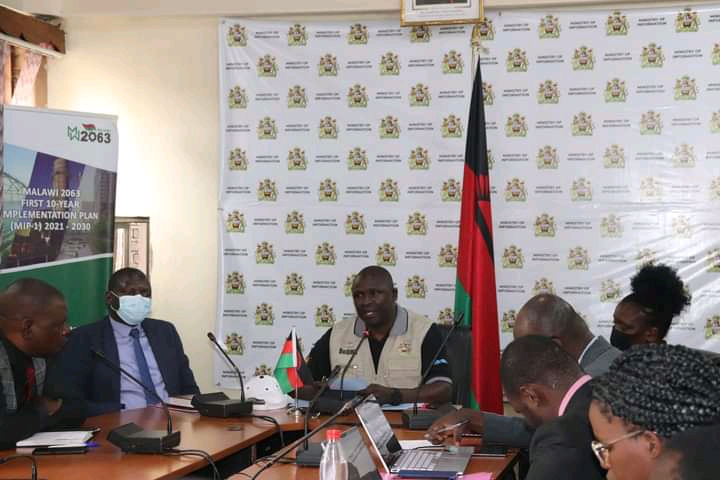
In collaboration with development and humanitarian partners, Department of Disaster Management Affairs (DODMA), has mobilised resources to the tune of MK76.27 billion towards implementation of the 2022/23 Lean Season Food Insecurity Response Programme to prevent and minimise impacts disasters that may be experienced during the approaching rainy season.
Addressing the media at Central Information Offices in Lilongwe this morning, DODMA Commissioner, Charles Kalemba said out of the total resource requirements under the Food Security Cluster, an estimated MK32.46 billion has been mobilized through: cash transfers; the Africa Risk Capacity drought insurance pay-out [USD14.2 million], MK2 billion from the Unforeseen Circumstances Vote, and MK43.81 billion will be covered through maize (90,665 metric tonnes) to be supplied from the government Strategic Grain Reserves.
Kalemba further said that the department has learnt from the impact of previous disasters and is working on long-term and sustainable solutions with various stakeholders to break the food insecurity cycle through construction and rehabilitation of irrigation infrastructure in flood prone areas to promote climate smart Agriculture, winter cropping and achieve food security at household, community and national levels.
He said DODMA is building the capacity of councils as first responders towards disasters, developing a multihazard plan for storms and cyclones, engaging all stakeholders and stocking up response hubs in all regions with equipment and relief items to ensure readiness.
The commissioner also cautioned the general public to adhere to disaster preparedness measures in their communities by not building in flood prone areas, constructing strong houses and working on their drainage systems to prevent destruction of property and lives, as the rainy season approaches.
Speaking during the media briefing, Director of Climate Change and Meteorological Services, Lucy Mtilatila, said projected rainfall from October to December 2022 will have normal to above-normal rainfall, with below normal rainfall in December over the central and northern Malawi. While January to March 2023, normal to above-normal total rainfall amounts are expected in most areas, with some pockets of below normal over the south eastern and central areas of Malawi.
She urged the general public to contact the department or visit their website for monthly, 10-days, 5-days, as well as daily forecasts tailored to their districts for effective farming and disaster preparedness.
According to an assessment made by the Malawi Vulnerability Assessment Committee (MVAC), a projected 3.8 million people in 27 districts and four cities in Malawi might face food insecurity during the 2022/23 lean season, from November 2022 to March 2023.


